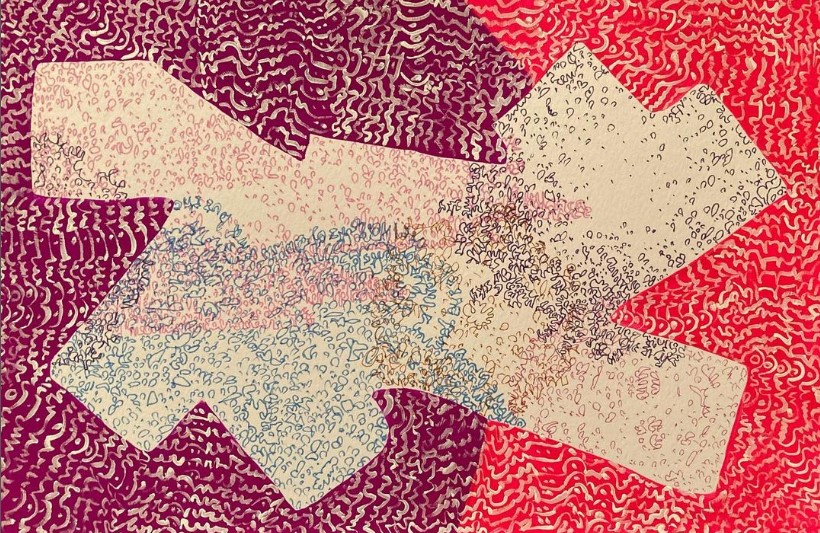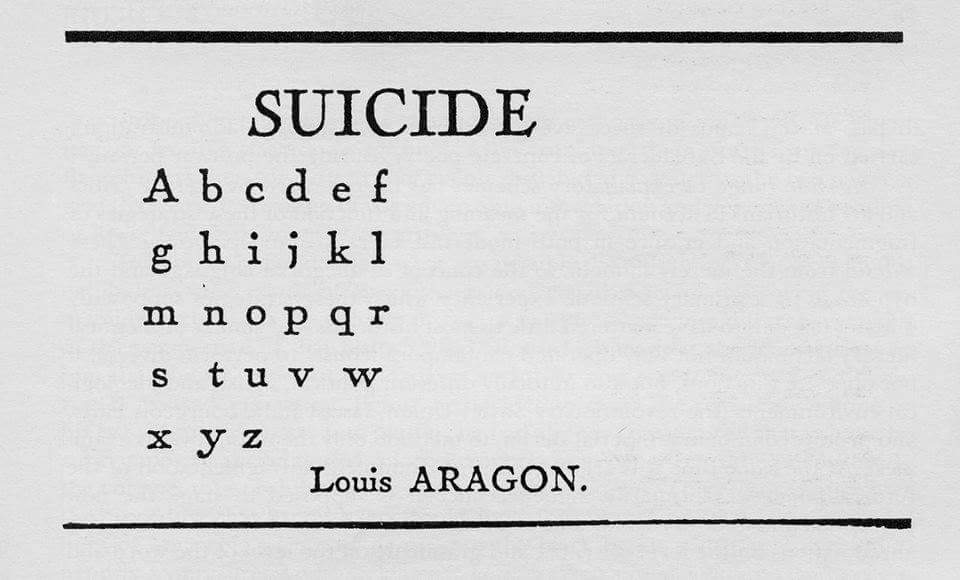
George Herbert's "Easter Wings" is perhaps the most famous and most successful concrete poem ever created. With concrete poetry, it's the arrangement of the words on the page to create an image which is what's important--far more than the poem making sense, or any other poetic element.
Concrete poetry goes all the way back to Ancient Greece. It should be obvious that it's a product of writing, and in many ways it truly emphasizes the ways in which writing transformed poetry. It also can be understood as part of a shift to the visual in the arts. While an oral form, rhythm and rhyme and other elements typically considered "poetic" were necessary to maintain in memory; writing allowed these rules to be loosened, for writers to play with words that sound the same but have different spellings and words that are spelled the same but have different sounds, and for the creation of images.
But let me ask you this: is this work by Todd Camplin (yes, he's my brother) a concrete poem?

It's made up of words, but they are arranged to create different kinds of patterns, with those patterns and the colors coming to be emphasized. Yet, how different is this from other forms of concrete poetry, especially those in which there is no real meaning to the poems other than the patterns created out of the arrangement of the words?
Concrete poetry challenges the boundaries between the visual arts and the literary arts, creating meaning in the images--sometimes in addition to the meaning of the poem, sometimes despite the words themselves not seeming to have any linguistic meaning (a concrete poem of a swan that used the word "neck" in the swan's neck is clever, but does it really contribute to the meaning?).
For my money, the real challenge in writing a concrete poem is for it to have linguistic meaning as well as visual meaning. Anyone can construct an image out of random words. Herbert is cleverer than that. And while there is something to be said for people who do things like Josep Maria Junoy in his "Ars Poetic," once it's done, it's done. You're just copying Junoy after that.
The same can be said of Louis Aragon's concrete poem "Suicide":

Aragon and Junoy are both Modernist poets, and both are clearly experimenting with a kind of poetic minimalism. The titles of each concrete poem is doing the work of creating the meaning, causing us to ask why what we see is being called "the art of poetry" or "suicide." The complete dissolution of words and letters into a pure visual field by Todd Camplin is a postmodern approach to concrete poetry, as you have no linguistic meaning whatsoever and are left with nothing but visual meaning--and even that meaning is more an appreciation of the design, as we often find in postmodern art.
Concrete poetry can range from having linguistic meaning as well as visual meaning to a complete breakdown into pure visual meaning alone. When it no longer has linguistic meaning, though, can we truly call it a poem? Or has it become something else? And where does that line exist? Or is that line itself fuzzy? Those are all things you can investigate in creating concrete poems.
No comments:
Post a Comment